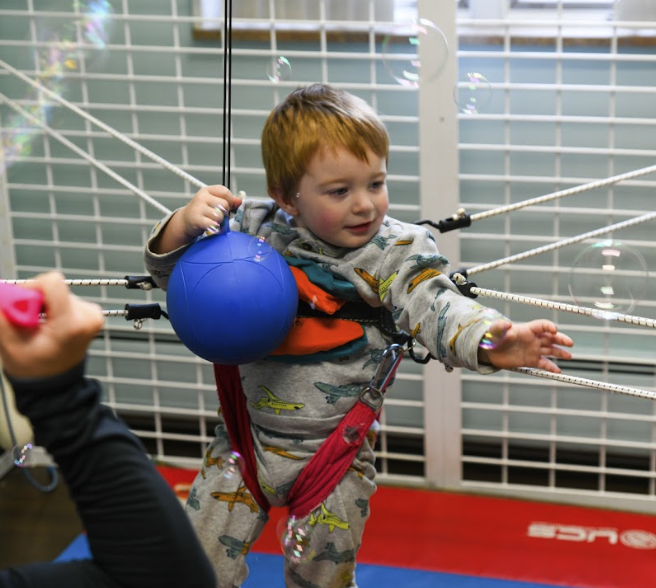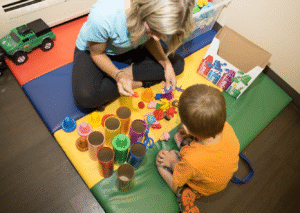From the moment a baby is born, reflexes play a critical role in survival and early development. These automatic movements called primitive reflexes help infants with essential functions such as feeding, rolling, and crawling. Over time, as the brain matures, these reflexes are meant to integrate, paving the way for higher-level skills like balance, coordination, and fine motor control.
But what happens if these reflexes don’t integrate properly? That’s where Reflex Integration Therapy comes in.
What Is Reflex Integration Therapy?
Reflex Integration Therapy is a therapeutic approach that helps individuals overcome the effects of retained primitive reflexes. Retained reflexes occur when the nervous system does not fully mature or reorganize, leaving reflex patterns active beyond the age when they should disappear.
A therapist trained in reflex integration uses specific, repetitive movements, exercises, and sensory activities to “re-train” the brain and body. These exercises mimic the natural developmental movements babies perform in their first year of life—essentially giving the nervous system a second chance to complete its wiring.
Why Are Retained Reflexes a Concern?
When primitive reflexes remain active, they can interfere with a child’s or adult’s ability to perform everyday tasks. For example:
- A retained Moro reflex (the startle reflex) may cause constant stress, anxiety, or sensitivity to sensory input.
- A retained ATNR (Asymmetrical Tonic Neck Reflex) can make reading, writing, or crossing the midline very difficult.
- A retained STNR (Symmetrical Tonic Neck Reflex) may interfere with posture, attention, and transitions between sitting and standing.
These retained reflexes can impact learning, movement, behavior, and even emotional regulation.
Who Benefits From Reflex Integration Therapy?
Reflex Integration Therapy can help a wide range of individuals, particularly those who demonstrate delays in motor skills, coordination, or learning. Some groups who benefit most include:
1. Children With Developmental Delays
If a child is struggling with sitting, crawling, walking, or fine motor skills, retained reflexes may be a contributing factor. Reflex integration can provide the foundation needed for more advanced milestones.
2. Children With Learning and Attention Challenges
Difficulties with reading, handwriting, focus, and classroom performance are often linked to retained reflexes. For example, a child who avoids crossing the midline may struggle with fluency in reading or writing.
3. Children With Sensory Processing Difficulties
Since reflexes affect how the brain and body process sensory information, integration therapy can reduce hypersensitivity, improve body awareness, and support self-regulation.
4. Individuals With Neurological Conditions
Children and adults with conditions such as cerebral palsy, autism spectrum disorder, traumatic brain injury, or stroke may benefit from reflex integration to improve functional independence and movement control.
5. Teens and Adults With Postural or Coordination Concerns
Reflexes don’t just impact young children—older individuals with unresolved reflexes may struggle with poor posture, clumsiness, motion sickness, or difficulty with physical coordination.
How Reflex Integration Therapy Works
Therapists typically perform an assessment to identify which reflexes are still present. Then, they develop a program of targeted movements and exercises, often practiced both in therapy sessions and at home. Examples include:
- Gentle rocking or rolling patterns
- Cross-body movements
- Crawling and creeping exercises
- Core-strengthening activities
These structured, repetitive motions help the nervous system “rewire” and complete the integration process.
The Benefits of Reflex Integration Therapy
When reflexes are properly integrated, individuals often experience improvements such as:
- Better balance and coordination
- Improved handwriting and fine motor control
- Increased focus and attention
- Reduced anxiety and emotional reactivity
- Enhanced learning and academic performance
- More efficient motor planning and independence
Unlocking Potential With Reflex Integration Therapy at Crawl Walk Jump Run
Reflex Integration Therapy is not just about movement—it’s about giving the brain and body the foundation they need to thrive. By addressing retained primitive reflexes, therapists can help unlock higher-level skills in children and adults, supporting success in school, at home, and in daily life.
At Crawl Walk Jump Run Therapy Clinic, our therapists are trained in reflex integration techniques that complement physical, occupational, and speech therapies. We believe in building strong foundations so that every individual—child or adult—has the opportunity to reach their fullest potential.If you think your child may benefit from Reflex Integration Therapy, call Crawl Walk Jump Run Therapy Clinic today at (586) 323-2957 to schedule a free consultation with one of our expert therapists and learn how we can help unlock their full potential.




